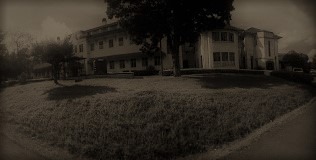Loreto Limuru School

In 1609, a Catholic nun by the name Mary Ward founded The Institute of The Blessed Virgin Mary in Omer, France. The institute would later be known as The Sisters of Loreto – a Roman Catholic religious congregation dedicated to the education of women. Mary Ward is praised for her many great deeds and one of her phrases lives on among the Loreto Sisters, and the alumni of the Loreto schools and colleges established around the world. “There is no such difference between men and women that women may not do great things, as we have seen in the example of many saints who have done great things. And I hope in God that it will be seen that women in time to come will do much.”
Loreto Sisters S.M. Dolores Stafford, S.M. Theresa Joseph O’Sullivan, and S.M. Veronica Bradley were three Irish nuns who arrived in Kenya in 1921 to set up a school for girls. The Loreto Msongari School project commenced and was completed in the same year they arrived. It was however only opened to European girls. The Sisters soon realized that the colonial administration did not prioritize the education of African girls and cultural practices prevented these girls from going to school. The three women went ahead and acquired land in Karambaini in the Limuru highlands, 28 kilometers from Nairobi, from European settlers and began the construction of what would be their second Loreto school.
On December 6th, 1936 Loreto Limuru School opened its doors to its first seven African students. While the idea had been to have the school solely as a secondary school, the students needed the basic primary education. This gave the Sisters another task: ensuring their first students had basic primary school knowledge required before enrolling in secondary school. In an interesting turn of events, on the first night of school, as a result of the chilly weather, all seven girls disappeared. They soon returned and recommenced their education, and in 1938, four of the seven girls sat for their primary examinations.

In time, more girls enrolled and the school’s growth progressed. In 1947, Loreto’s first secondary class began and three years later, Mary Sekunda Wanjiru and Merioth Wairimu passed the Senior Cambridge Certificate Examination. The two are credited as the pioneers of the school’s recurring excellence in the years that followed.
While more African girls enrolled at Loreto Limuru, there came a need to expand in order to ensure that the quality of education was maintained. In 1956 a second stream was added to each secondary class and on average, each class had 23 students. This same year a young Wangari Maathai joined the Limuru school.
Loreto established itself as an institution of excellence in both academic performance and extra-curricular activities, and in 1958 the school soared to national status encouraging more girls to enroll. The school which later earned the nickname ‘Reds’ maintained its stellar status over the years and to date remains a High School coveted by many primary school girls.




2 Comments
One of my best memories about my alma mater high school was the system of care that was ingrained. When I arrived as a scared form 1, I was met by a school mother- a form 2 student (Janet Onim, Thank you), who took me in hand and showed me everything including how my school bed was supposed to be made. I knew that I had a connection all the way to form 6 of ladies who would help me if I needed it. This system was replicated every year. I learnt respect and honor at Loreto High School, Limuru. I also learnt to be tenacious and this is the place I made the very first conscious decision to be the woman I am today.
Tagging all Loreto Girls; Kotetians wherever you are, thank you for being part of this deep legacy of love for God and service to humanity. Cruci Dum Spiro Fido!
This is such a beautiful message Jaki. Thank you for sharing